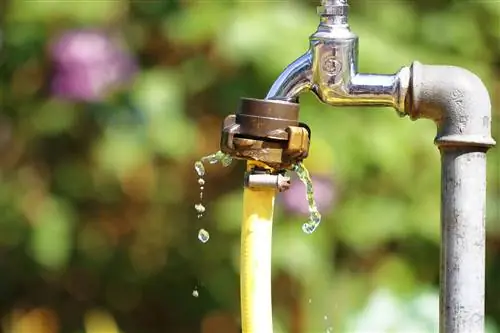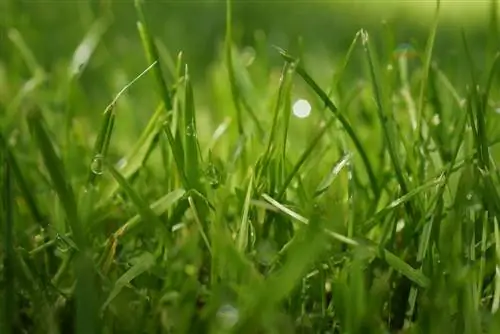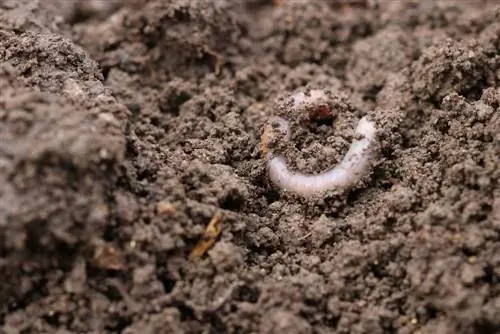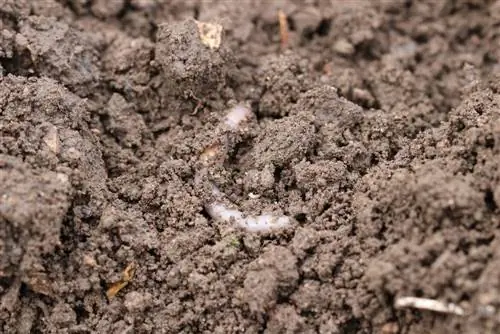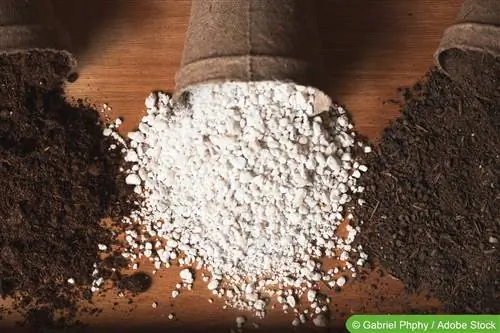- Author admin [email protected].
- Public 2023-12-17 03:39.
- Last modified 2025-01-24 12:45.
Plants have very different requirements for the soil in order to thrive and produce the highest possible yields. In most cases, the existing soil does not meet these requirements and must therefore be improved. The basic principle is: it's all about the right mix!
In order to improve your own soil, you first have to take care of what type of soil is available. The nutrient additions and further care measures are then determined.
There are different types of soils
- the sandy soil; it consists of individual grains of sand, cannot be shaped and does not stick to your fingers; sandy soils are usually acidic and poor in nutrients and cannot store water well; Sandy soils are well ventilated, warm up quickly, but also dry out quickly
- the clay soil; it consists of sand grains and also mealy parts, the so-called silts; it is malleable with your hands but also easily cracked; The nutrient reserves are usually sufficient, and water can be stored well
- the clayey or heavy soil; it is easy to knead and roll out; the soil is heavy and wet and can absorb a lot of water; There is a quick risk of waterlogging; the soil is poorly ventilated and heats up very slowly
Once you have determined which land you own and want to cultivate, you can easily close the supply gaps.
A humus layer is particularly important for the development of life in and on the ground. Because humus makes the soil habitable. Humus ensures a long-term supply for the plants. The production of humus is mainly carried out by the soil organisms, which are the interface between living plants and organisms and the dead organic matter. The soil organisms feed on what is present, i.e. on dead plant parts, on existing humus, on living plant parts and also on dead organisms. They produce nutrients from these things again. Nutrients are supplied naturally and are available again quickly or less quickly depending on the level of biological activity. Humus is therefore not a type of soil, but humus refers to the organic substances in the soil.
The vital humus consists of the following minerals and nutrients
- Water
- Manganese
- Sulfur: is partly responsible for the metabolism of the plant
- Potassium: makes plants resistant to pest attacks
- Phosphorus: is very important for the formation of flowers and fruits
- Carbon
- Calcium: is partly responsible for the metabolism and ensures the optimal effect of the other nutrients
- Aluminium
- Iron: is important for the formation of the green dye
- Nitrogen: is very important for plant growth to prevent underdevelopment
- Magnesium: is important for the formation of the green dye
- Zinc: is partly responsible for growth
How humus affects the plant and the soil obviously depends on its exact composition. An excess of a nutrient can have just as negative an effect as a deficiency. It is therefore sometimes necessary to improve the humus layer with fertilizers that are missing or with products that reduce any excess. If the humus is optimally balanced, it forms the ideal basis for gardening because it has many very important tasks:
- contains minerals and nutrients
- improves the air and heat balance of the soil
- increases the soil's ability to absorb water
- has filter tasks against pollutants to protect groundwater
- Humus represents the most important habitat for plants and soil organisms and is therefore the basis for horticulture, agriculture and forestry.
A soil test using a soil sample that you take and send in is a great way to determine the type of soil you have and its composition. With the results of such a study you can help the humus formation and thus create the optimal soil for the needs of your plants. The result is magnificently thriving plants and high yields.


